During my year teaching in Zanzibar, through the Zanzigap organisation, I took two trips to mainland Tanzania. The first of which was to go on Safari, one of my friends from the UK came over to visit for 2 weeks. We spent a week in my house and my friend relaxed at home while I was working. The second week the school was closed so we decided to make the most of it and headed out to Arusha. Arusha is the main town to visit if you want to go on Safari. We travelled there by local bus and found a cheap hostel run by the local church. We only stayed there for one night before heading off on Safari the next morning. The Safari was for two days and included going to two different Safari reserves.
Lake Manyara
The first was Lake Manyara, we arrived in a village just outside the park, set up our tents and ate some lunch. As soon as we had done we set off into the park in our Jeep. As we entered the park there were a lot of trees and we didn’t notice any animals at first. Then all of a sudden we were surrounded by Baboons. We drove through the trees some more, passing through small clearings which allowed us to see some huge hills lining the park. Up in the hills we could see some nice looking hotels which would have a great view down over the park. When we got out of the trees we found ourselves in a clearing filled with more Baboons and some Gazelle. We moved a little further along the track and our guide stopped the Jeep. We looked around and noticed that through some bushes there were some Elephants, so we lingered there a while to take photographs.

We had been near the Elephants for a few minutes when we heard some rustling sounds in the bushes, one of the Elephants had come over to the Jeep to see what was going on. We waited until he had moved on and then continued down the track. We passed by some Hippo, hiding in some water with only their eyes and noses sticking out above the water. Also a Warthog and a group of Giraffe.
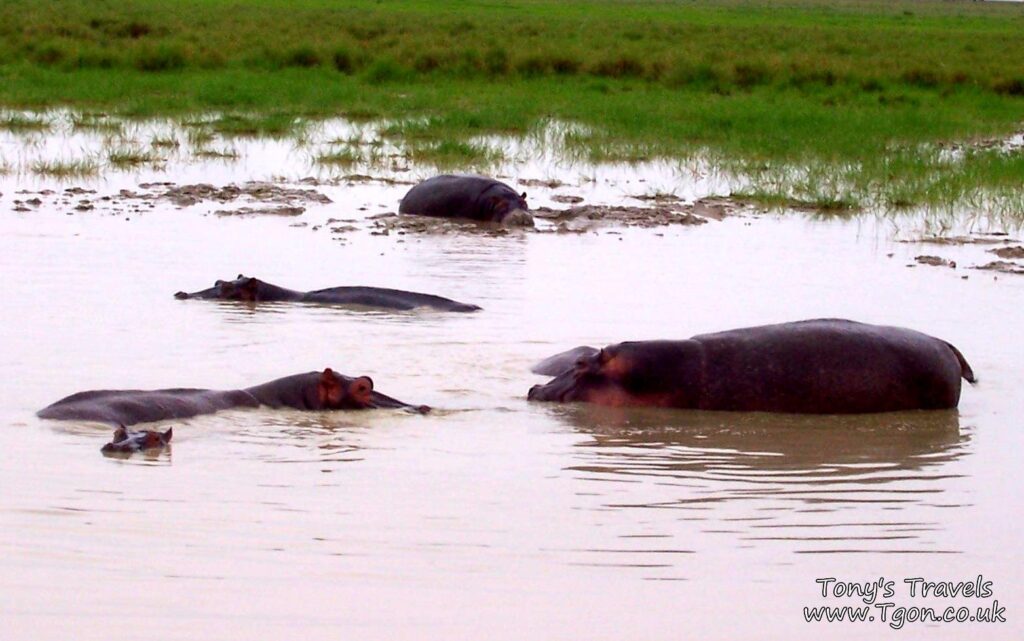

We moved further through the park and stopped to let a Zebra cross the track. That’s when we also noticed one lone coconut tree in an otherwise empty landscape ranging for miles. We took some pictures and carried on. We stopped next to a small river, by this point we were sat on the roof of the Jeep so that we could get a bit of a breeze as we drove around and also to get a better view of what was around us. We had only been next to the river for a short time when a family of Elephants came into the water and started to wash each other.

After we left the park we headed back to the village where our tents were. We wandered around in the market for a while and had a few drinks before heading back to the tents where we drank some red wine and talked under the stars. The next morning we awoke a little hungover, packed our tents and away and got on the Jeep.
Ngorogoro Crater
We set off to the second Safari reserve, Ngorogoro Crater, this reserve is the crater of an old volcano which collapsed in on itself. To get inside you have to drive high up into the hills, up over the lip of the volcano and down into the crater. There was a really strange atmosphere, the cloud seemed to be really low, but really the ground was just very high. At first there wasn’t much to see, we noticed some Ostriches, a Bison and a Rhino each was quite some distance away from the others.

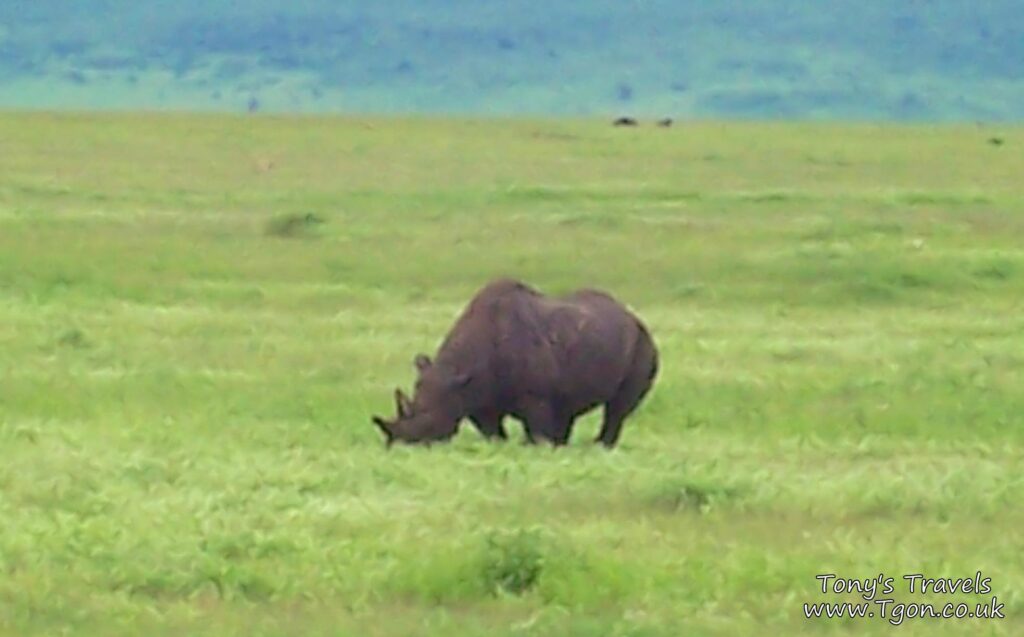
The next animal we saw may have been the reason for all the animals keeping their distance, in the distance sat on a small hill we saw a male Lion looking down across the park. We didn’t get very close but did manage to get a couple of photographs before we moved on. As we got close to the other end of the park there were more Hippos hiding in pools of water, then a huge group of Zebra. One of the Zebra had broken its leg and was being followed, at a distance, by a group of Hyena. Once we had left the park we headed back to Arusha for a night, then my friend headed north to Nairobi to get his flight and I headed south, back to Zanzibar.
Backpacking Tanzania
My second trip to mainland Tanzania was for a month long backpacking journey with a German friend I had met who was also doing charity work. The plan was to backpack around as much of the country as possible, staying with other groups of German people who were doing charity work through the same group as my friend. We set off from Zanzibar Town on the slow-boat to the mainland, stayed a night in Dar es Salaam with the first group of charity workers. Then got the train from Dar es Salaam to Dodoma, the capital of Tanzania. We arrived in Dodoma, dropped our bags at a hostel and went to get some food and a few drinks. The bar we found had bars on the bar, I imagine this was to keep the staff and stock safe from the drunk customers. Our hostel also had a very interesting sign warning prostitutes to stay away. Dodoma was not always the capital of Tanzania, it was once Dar es Salaam. Dar es Salaam is still the largest and wealthiest city in Tanzania, but the government wanted to plan a new city from scratch, which would also be in the centre of the country, Dodoma is that city.
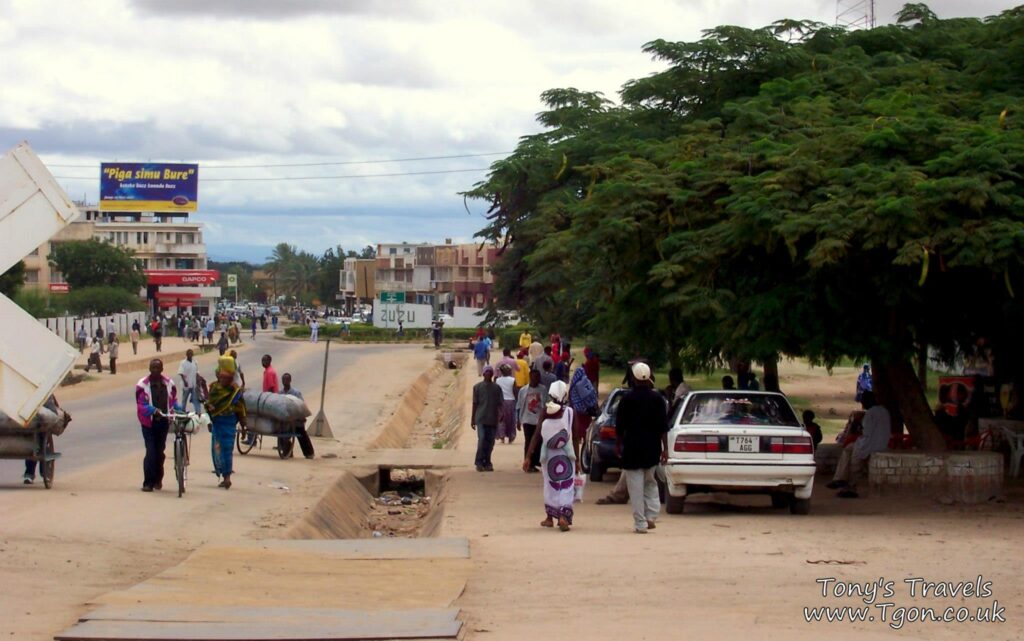

After a night in the hostel we decided to rent some bikes and head out to one of the hills that surround Dodoma. We headed out and then climbed to the top of the hill to take some pictures. On the way back we stopped under some trees and had a cold drink with some local guys before heading back into Dodoma proper. Later that day we got the train heading north to Mwanza, the trip lasted around 48 hours. We stopped a few times for no apparent reason for differing lengths of time before carrying on along the tracks. Each time we went through a populated area the train would slow right down, allowing the locals to walk alongside the train selling drinks and snacks to the passengers.
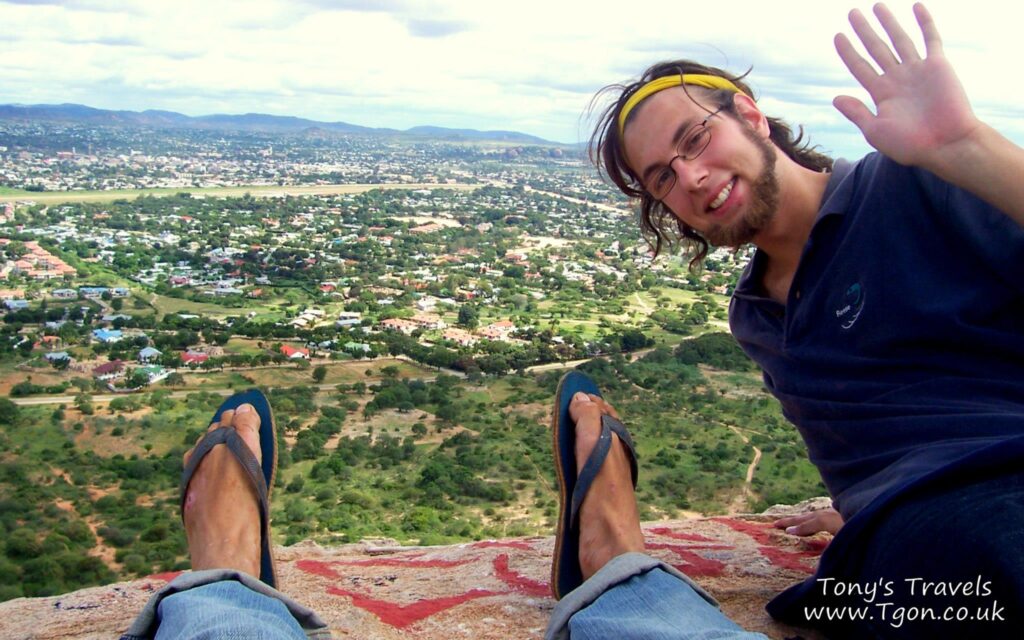

When we finally arrived in Mwanza we quickly found a hostel, dropped our bags and went out to find somewhere to eat. We found a nice little Chinese restaurant on the shores of Lake Victoria and stayed there for some food and a few beers. One of the owners was fishing Lake Victoria from the restaurant, unfortunately the lake is now only filled with Nile Perch. This was due to a government plan to provide fast growing fish to feed the people living around the lake. Unfortunately the Nile Perch ate almost everything else which lived there. The next morning we walked around Mwanza, visiting the markets and the local Hindu Temple before taking a night boat across Lake Victoria to Bukoba. The next morning we arrived in Bukoba but didn’t stay long, we got a minibus out to a small village in the hills, called Kashasha. I really like this area because the hills reminded me of the Peak District back home. We stayed with the second group of charity workers here, eating with them and staying in their spare room.

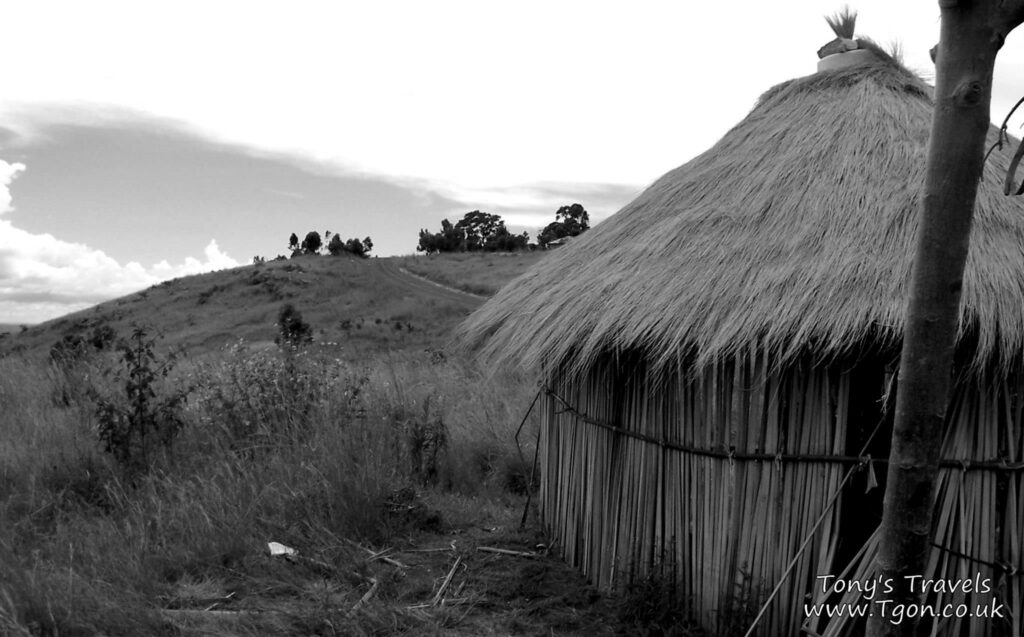
The following day we headed back into Bukoba to get a bus across to Kigoma. This journey took a little over 24 hours, we stayed the night in a small hostel next to a bus station before heading back out. When we arrived in Kigoma we dropped our bags in a hostel and went to explore the town. We headed down to the shores of Lake Tanganyika, stopping for a drink on the beach before climbing up one of the hills to get a better view of the lake and back onto Kigoma itself. We stayed a night in a hostel, which was basically a spare room in the back of a bar, before getting on a boat which would take us along the length of the lake.


The boat journey was long, it took about a week, but amazing. Boarding the ship in the first place was a bit of a struggle, firstly we had to board one ship, walk around to the other side of it, then climb over the railings and onto our ship. Once everyone was on board we set off across the lake. As there aren’t many villages which have ports, local people come out to the ship on smaller paddle boats to take people back to shore, kind of like water taxis. We spent most of the journey sat on the roof of the boat, chatting to locals and taking pictures. The lake is bordered by mountains on both edges. On the west are the mountains of the Congo and to the east are the mountains of Tanzania. It was great watching all the boats come out to take passengers back to shore and watching the passengers climb out, down the sides of our boat.
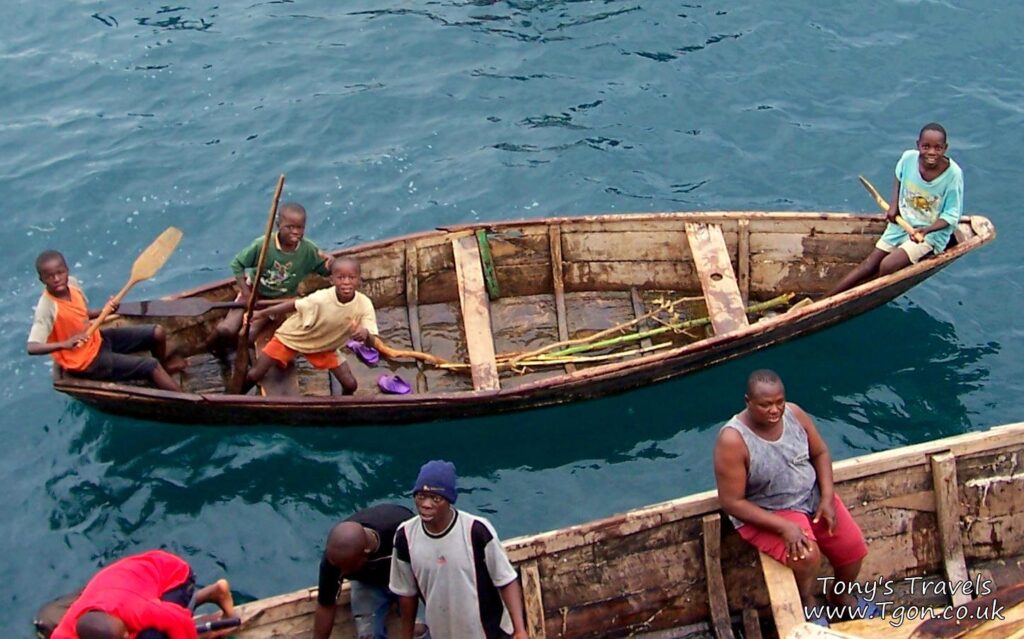
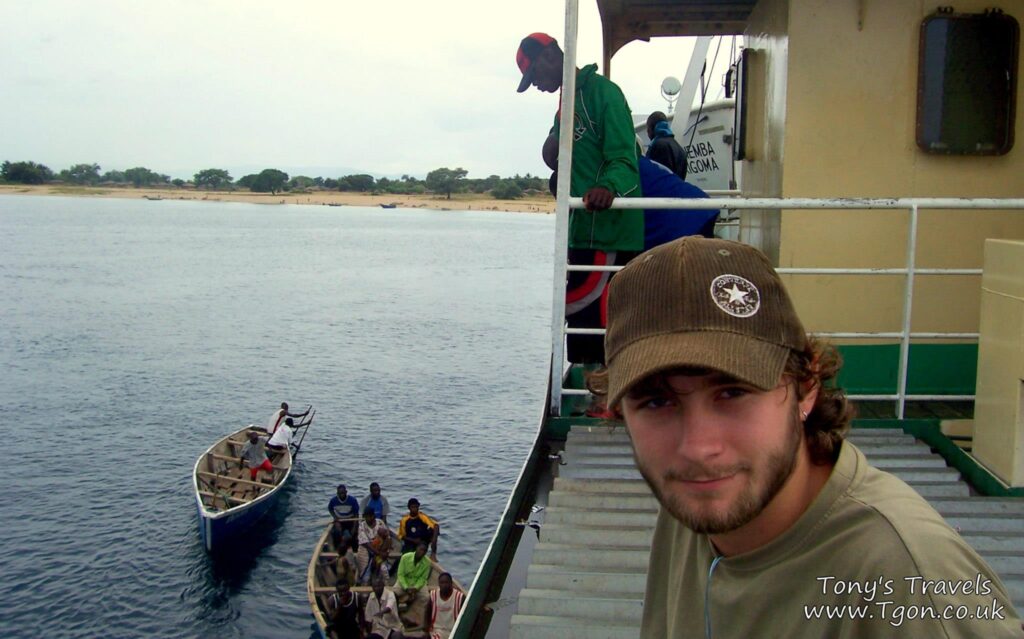
After almost a week on the boat we arrived at Kasanga, luckily there was a small port so we could get off the boat without climbing down the side into a water taxi. We walked the short way from the port to the village and went into the hostel. This was the most basic hostel I had stayed in but was comfortable enough, even though the mosquito net was way too narrow for the bed. We had come here to visit Kalambo Falls, so early the next morning we got up to catch the bus. Unfortunately the bus didn’t come so we set off walking on a two hour journey to where the bus would have taken us. Although it was more walking than we had expected I actually enjoyed walking, it felt good to be walking through the wild hills of Africa, where only a few tourists had wandered before. We passed through a village, to the great enjoyment of the local kids, who followed us for a mile or two out of their village and down the road.
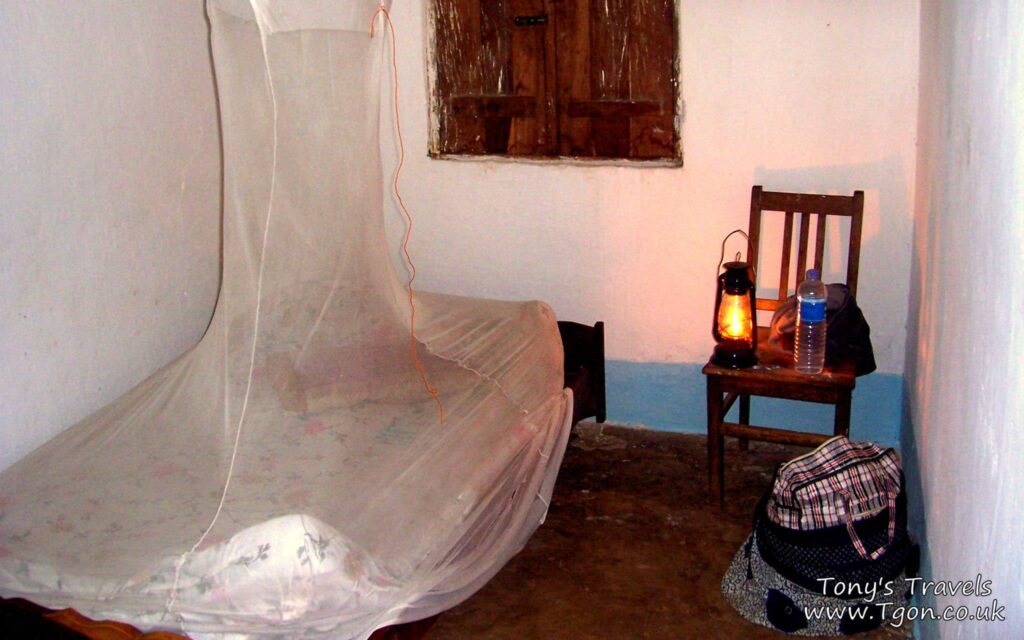
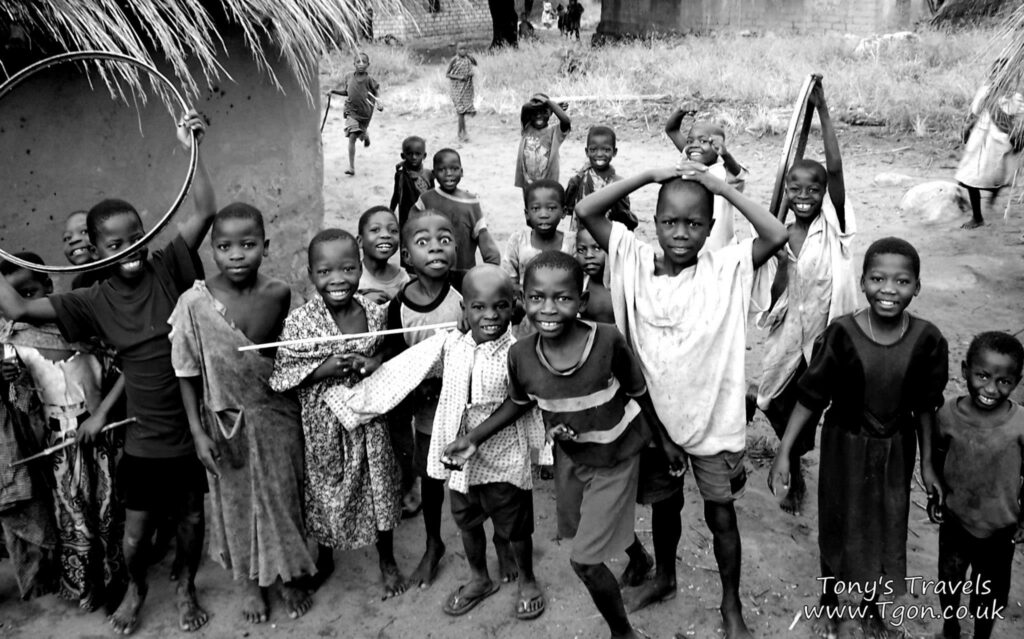
Kalambo Falls is a 235m high waterfall which joins Lake Tanganyika, they are the second highest uninterrupted falls in Africa and mark the border between Tanzania and Zambia. The views were amazing but, having a healthy respect of heights, I found posing for these pictures a little scary. One of the great things we saw was a tree which has started growing on the cliffs and had survived there by wrapping its roots around the rocks on the cliff face. We stayed there to rest for maybe an hour before heading back to the hostel. This time we got the bus for the second half of the trip. Having stayed in Zanzibar for almost a year I was really missing the taste of pork, we mentioned this to our guides who were happy to sell us a pig. We bought it and it was slaughtered, butchered and served up for supper which we shared with the locals from the village. A great finish to the day. From Kasanga we headed north to Sumbawanga and hitched a ride in the back of a truck carrying sacks of corn to Zambia. This journey was great, even if a little bumpy, we arrived in Tunduma on the border with Zambia and stayed a night in a hostel there.
Climbing Kilimanjaro
At around five in the morning I got up and headed to the bus station for a long day of bus travel. My first bus took me half way across the country, back to Dar es Salaam, I stayed a night there before getting my second bus, taking me across the other half of the country, to Moshi. While Arusha is the best place to go to arrange a Safari, Moshi is the best place to arrange climbing Mt. Kilimanjaro. I arrived in Moshi and quickly put my name down for a group who were heading off the next day. I headed back to the hostel and the view from my window perfectly framed the mountain. I headed up to the restaurant and had chicken and chips with a bottle of Guinness export, daydreaming about what the next few days held in store. The mountain has four distinct stages to it, the first day of walking took us through the first stage; Forest. I was climbing the mountain with a Japanese guy who was travelling through Tanzania by mountain bike. We stayed the first night in some camp huts on the edge of the forest.
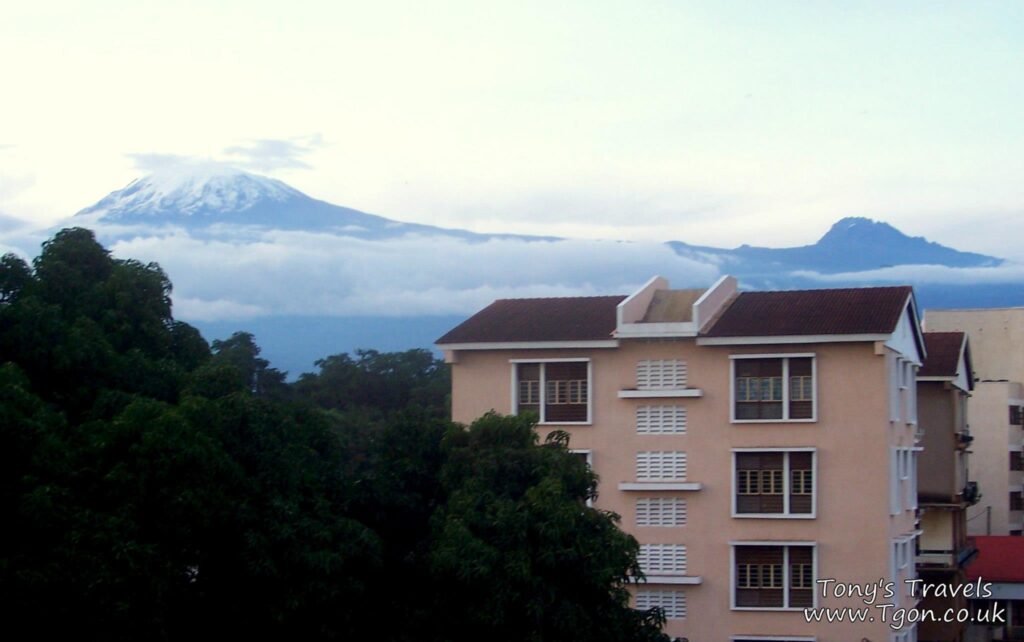

The next morning we woke up to find that we were above all of the clouds, looking out from our hut it was as though the tops of the other mountains were little islands in a see of cloud. We ate our breakfast and set off along the track. As we exited the forest section the last few trees were highlighted against the clear blue, cloudless sky. As we entered the second section; Moorland, the trees disappeared and we found ourselves wandering through small shrubs and bushes, very similar to the Peak District back home, although there was the snowy top of the mountain in the distance.

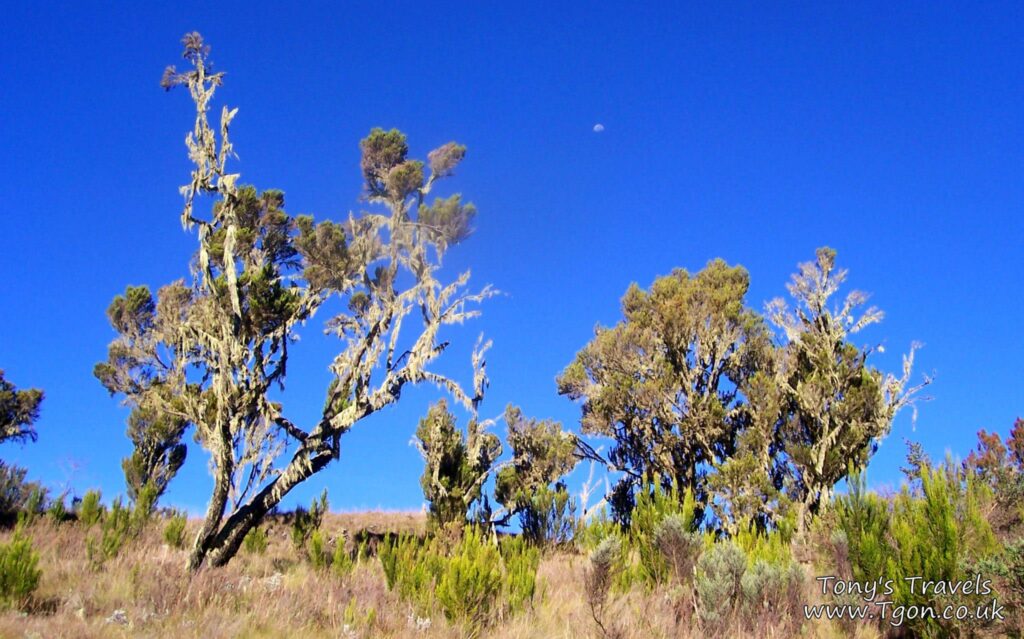
The second night we stayed at another camp made up of a collection of huts. This one was on the edge of the Moorland section. Close by the camp was a small cliff face nicknamed the Zebra Rocks, the minerals in the soil above gets washed down by the rain water and leaves these stripes of sediment on the rocks. Early the next morning we got up and headed through the third section; Alpine Desert.
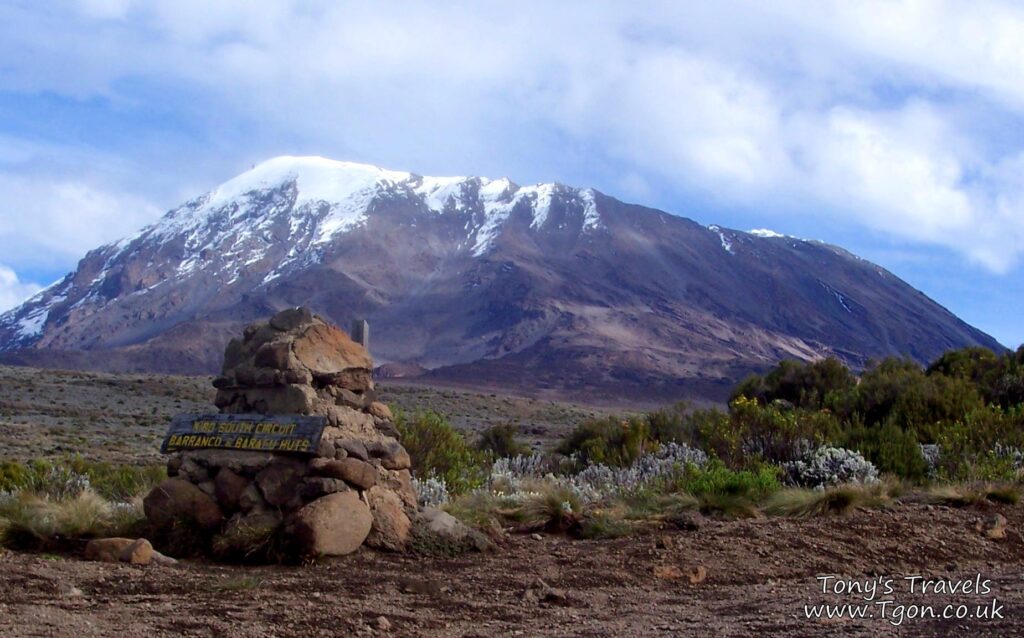
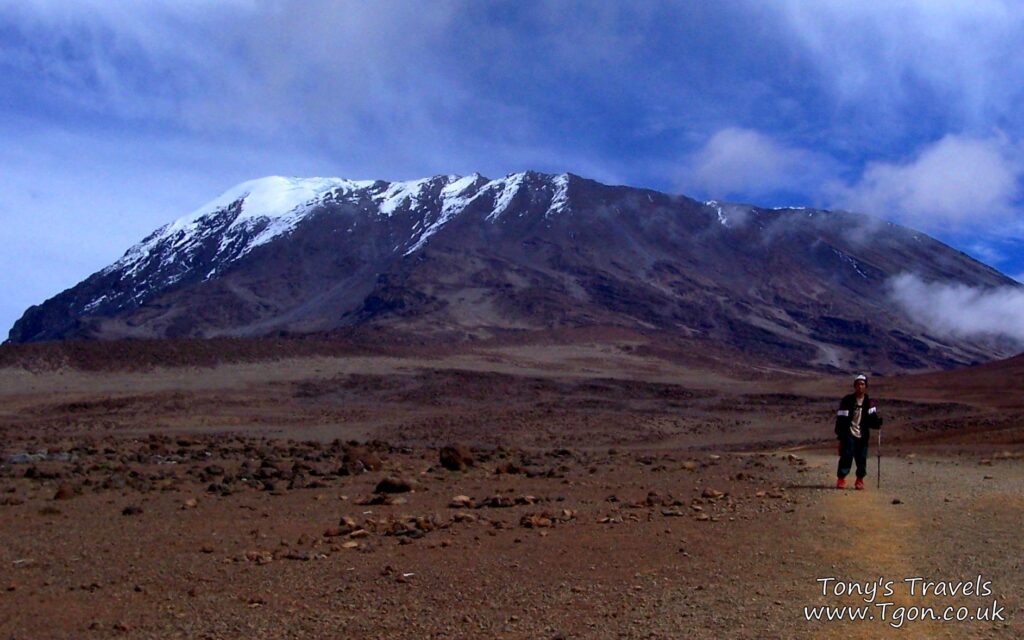
On the third day we headed across the Alpine Desert section of the mountain until we reached the final camp at the base of the steep climb to the summit. After dropping off our bags and having some food we walked a little way up the slope and took some pictures looking back down onto the camp. We headed back and tried to get an early night, we were scheduled to set off from camp at midnight. We woke up at midnight, had some soup and set off up the mountain, the final stage is a steep slope, our route slowly climbed the slope in a zigzag up to the top. At the top of the slope is Gilman’s Point, while this is the top of the steep slope it isn’t actually the highest point of the mountain. To get to Uhuru Peak you have to walk along the lip of the old volcano, to the highest point 5,895m high.
From Gilman’s Point onwards I had bad altitude sickness, I had a terrible headache and if I moved by eyes sharply I was temporarily blinded for a second or two by bright flashing colours. Each step had to break out of the frozen snow then back through it as you put your weight down. Eventually we got to the summit and stopped there briefly to rest, we arrived just before sunrise and watched as the shadow of the mountain shrank back into the the mountain, the sun rising behind us. We set off back down towards camp, after all the only cure for altitude sickness is to go back down. We were the first group to reach the summit that day.

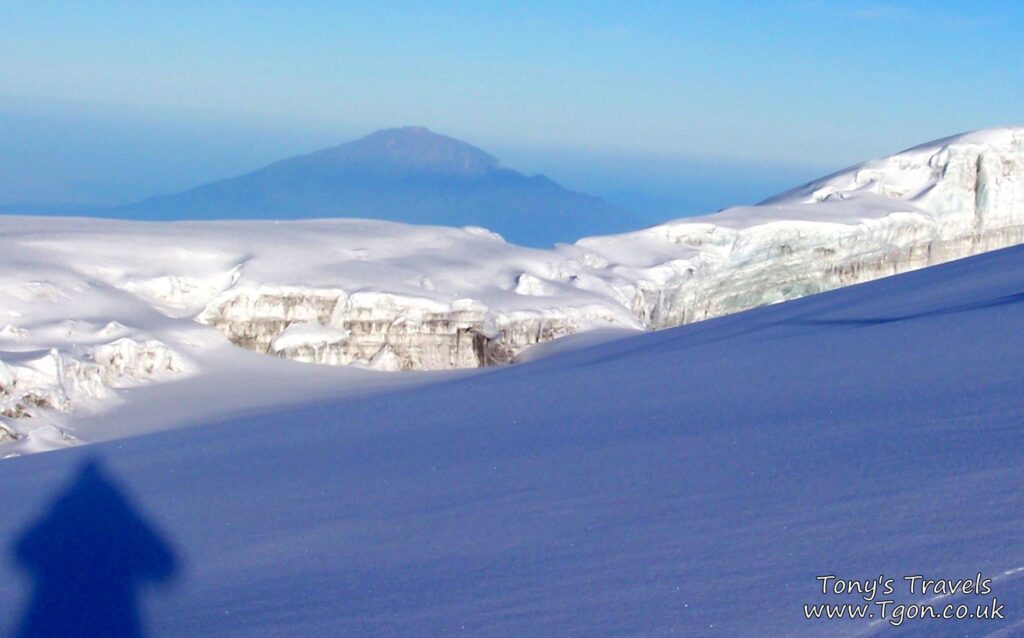
Although it had taken us three days to get to the top, it only took two to get back down. We quickly walked back and managed to reach the edge of the Forest section before it got too dark. Then the next day we went back to the bottom and got a minibus back to Moshi, I went back to the hostel, had a shower, a cold beer and slept. I spent the next day exploring Moshi before I got the bus back to Dar es Salaam, then stayed a night there before getting the boat back to Zanzibar and heading home to Makunduchi.
Other useful links:
